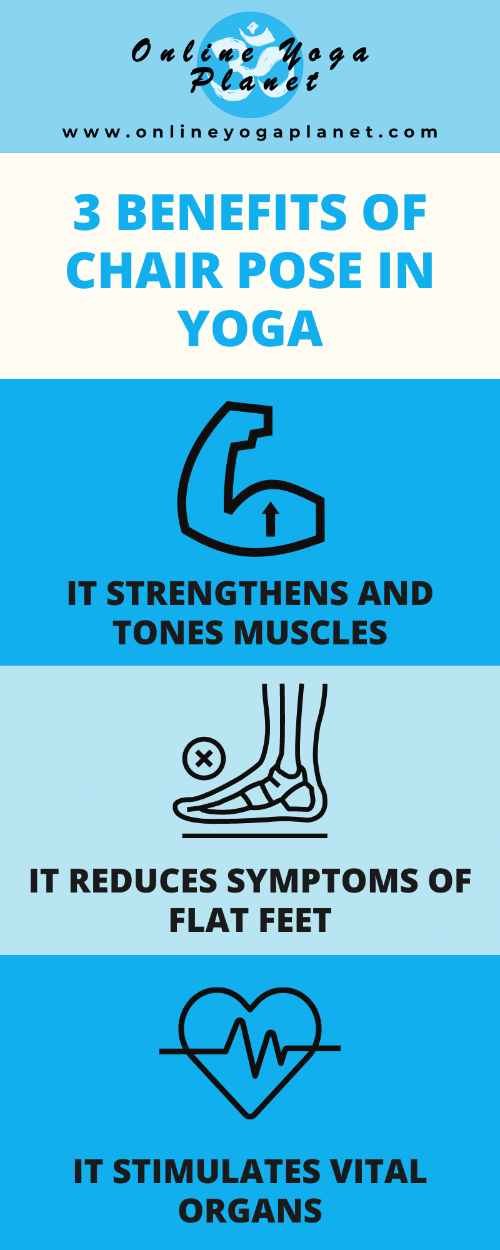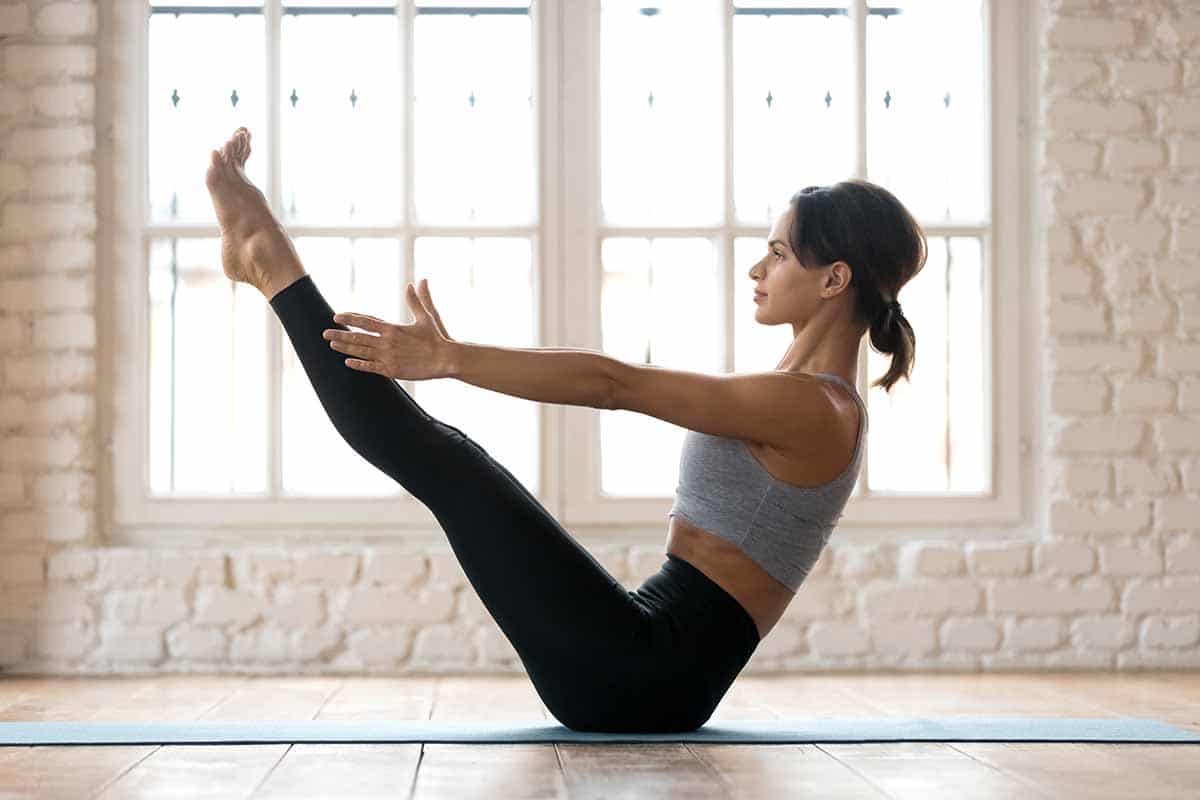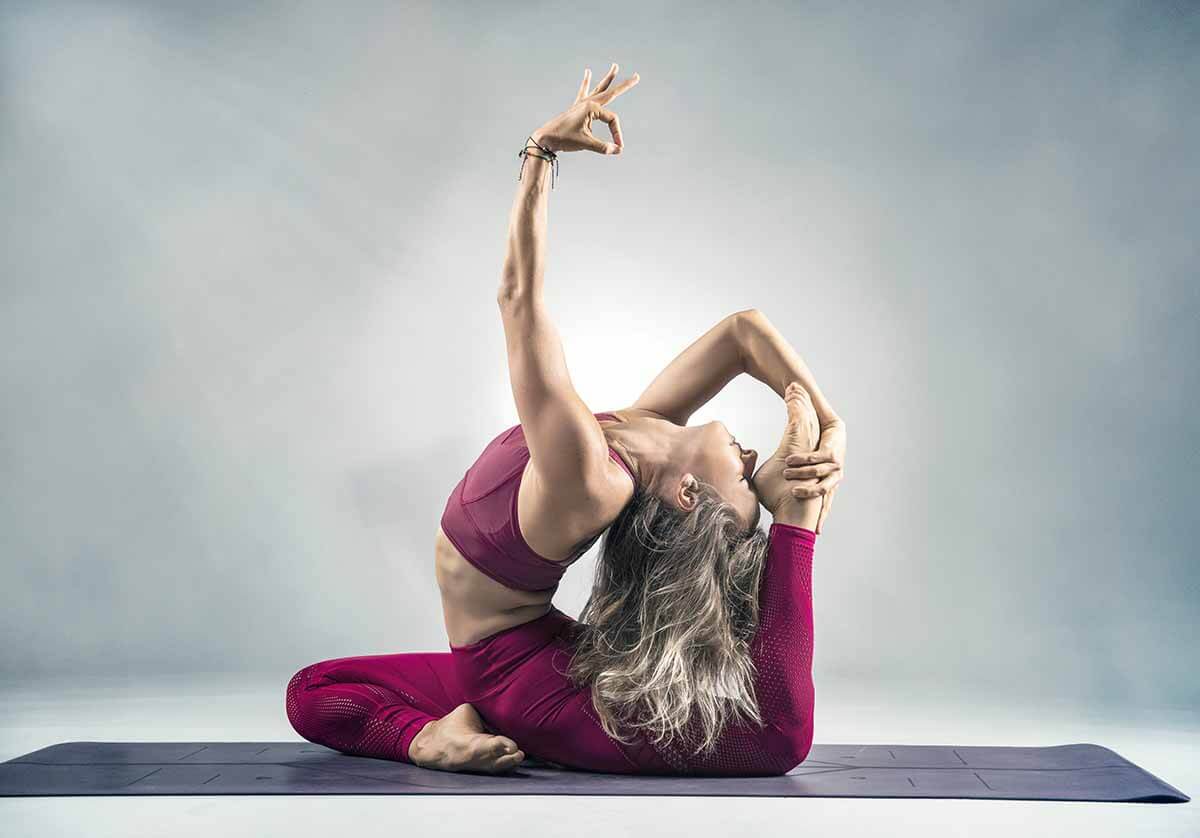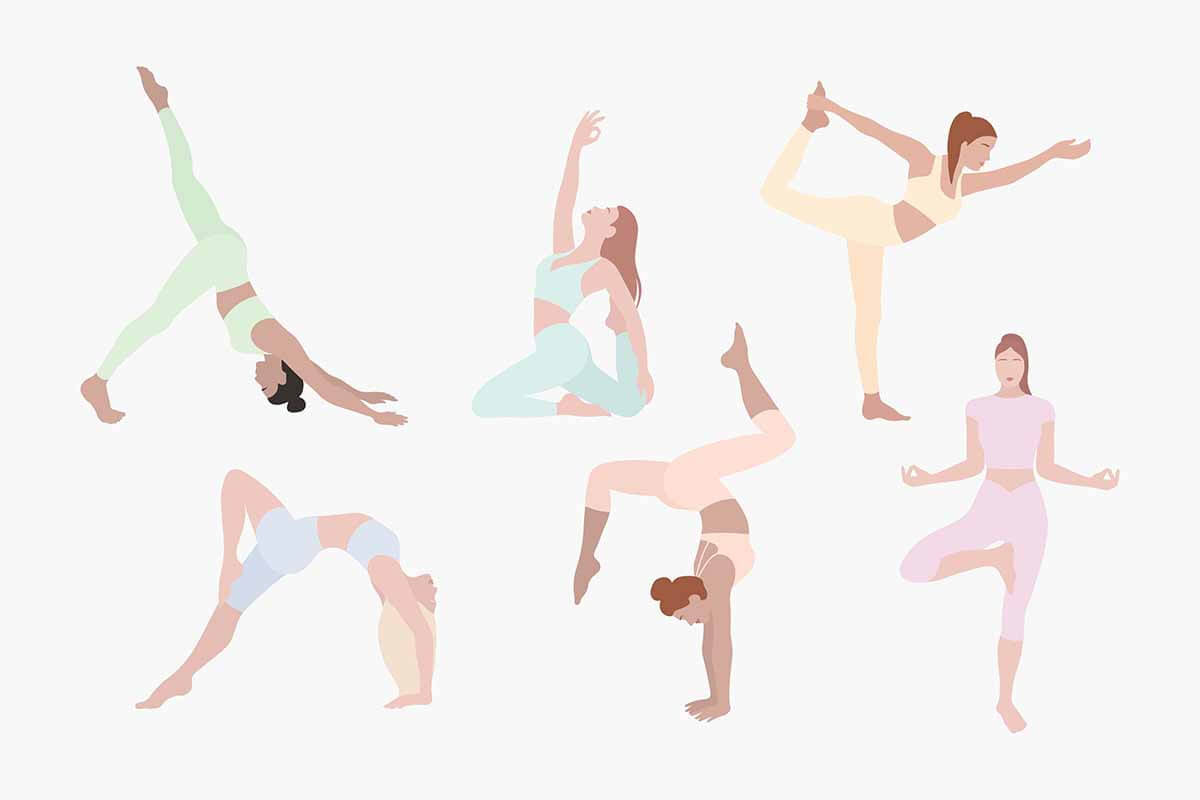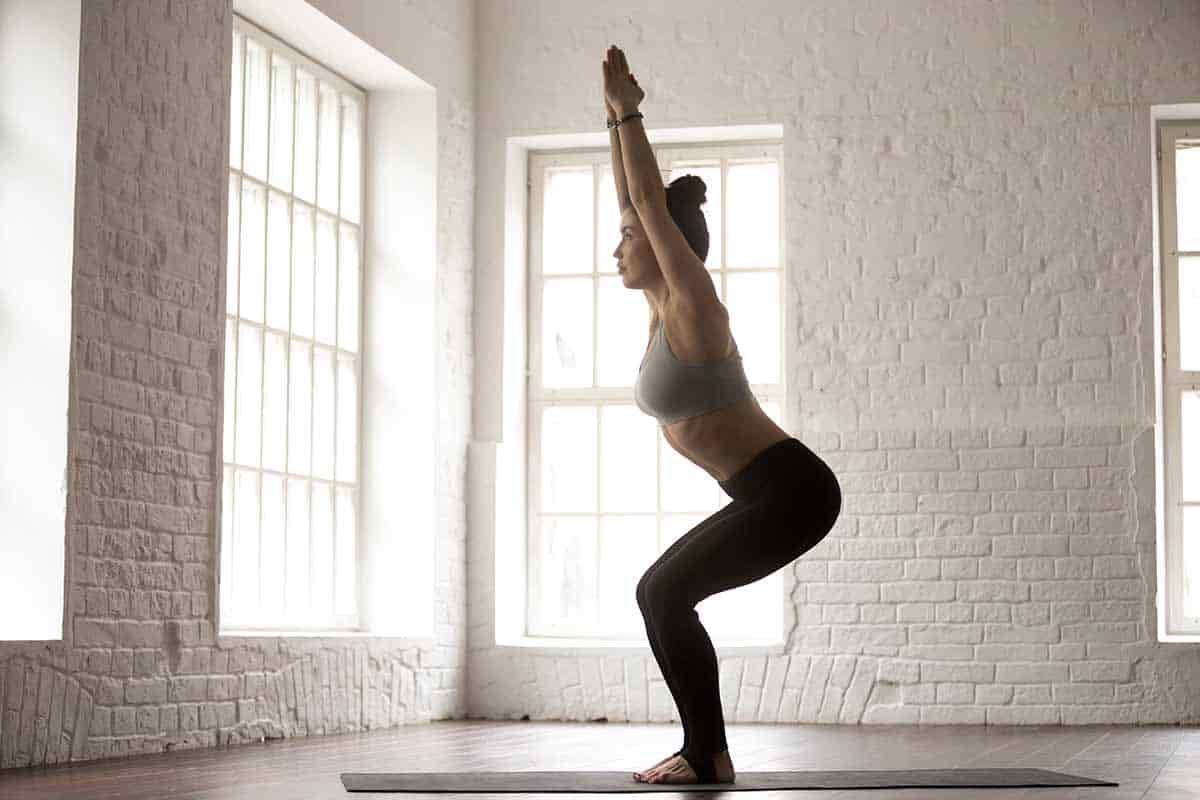
ant to learn yoga at home? There’s a lot of poses out there that you might consider. One of the most popular is the chair pose. If you’re new at yoga, you might wonder what chair pose is and how you can accomplish it in your house. Is it easy to learn and accomplish everything inside the safety of your home?
Chair Pose is a standing yoga pose that can strengthen your muscles and improve balance if done correctly. It’s easy to learn and doesn’t need much space to do it correctly.
Read on to learn more about the Chair Pose, including the steps you can take to accomplish it and the benefits that come with this particular yoga position. The more you know about Chair Pose, the better you can accomplish it inside your home. There’s lots of good that can come from tackling this position.
Article Topics
What is a Chair Pose in Yoga?
In yoga, as mentioned above, the Chair Pose is a standing position that strengthens the entire body rather than targeting a small group of muscles. It’s called the Chair Pose because when it’s done correctly, it looks like the person accomplishing the exercise is about to sit down in an invisible chair.
Some people that may find benefits in yoga include:
- Pregnant women
- Those who want better balance
- Those who want core strength
These people, and anyone else who wants to improve their strength, will enjoy Chair Pose.
This yoga position is also not complicated. Those who struggle with complex positions like the Crane Pose will find the Chair Pose to be a refreshing break from the complicated twists and turns that advanced yoga poses require. However, if you have severe knee pain or have recently suffered a knee injury, you shouldn’t do Chair Pose.
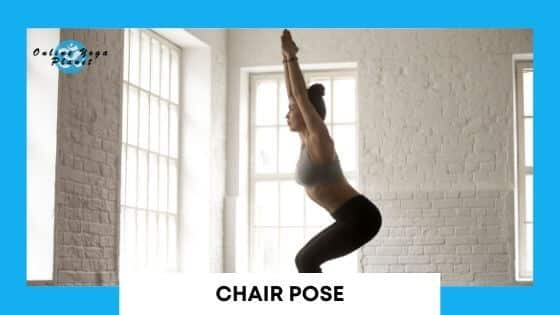
What is the Sanskrit for Chair Pose?
In yoga, every pose has a Sanskrit name. For Chair Pose, the Sanskrit name is Utkatasana. This name comes from the Sanskrit word ukata. Ukata means things like superior, proud, and fierce. This meaning fits with the Chair Pose, as you can imagine sitting down on an invisible throne as you take on the movement.
The name for Chair Pose has a long history deeply rooted in ancient mythology. The most critical thing to know is that it is a pose strongly reminiscent of power lost and gained. When you do Chair Pose, know that the action has a deeper meaning. If you want to look more into mythology, there are a lot of resources out there.
What is a Chair Pose Good For?
If you’re thinking about incorporating Chair Pose into your everyday movements, you might wonder what it’s good for in your life. What parts of your body will benefit from adding the Chair Pose? There are a lot of things that the Chair Pose is excellent for in someone’s life.
There are a few benefits that come from the Chair Pose. A few of the most impactful on a person’s body include:
- Improving muscles: This pose can strengthen and tone muscles all over your body, with your legs and core getting the most out of the movement.
- Benefitting balance: Chair Pose can help you improve balance, allowing you to steady yourself as you push into the position.
- Stimulating organs: Certain vital organs are stimulated when you wake up and start your day with this pose.
- Relaxation and power: The Chair Pose can relax your body while filling you with a sensation of quiet power.
These are all that the Chair Pose is ideal for in anyone’s life.
Later on in this piece, we’ll talk more about these benefits so you can understand how they’ll impact your life. For now, we need to discuss how you can take on the Chair Pose in your life, no matter what it looks like at home.
What Are the Steps to Get into Chair Pose?
We’ve talked a lot about what makes up Chair Pose, but now you might be eager to try it out for yourself. As with any yoga pose, there are a few simple steps you can take to easily slide into this position at any given moment during the day. We’ll dive into these together so you can attempt it for the first time all by yourself successfully.
To get into the Chair Pose for the first time, you will need to do the following:
- Stand tall: First, you need to stand up straight and tall. Your feet should be about shoulder-width apart. Let your arms relax at your side.
- Inhale and stretch: Next, inhale and lift your arms until they’re next to your ears. Your wrist and fingers should be long, your shoulders, spine, and neck should be relaxed and in line.
- Exhale and bend: Once you’ve done this step, exhale. As you do so, bend your knees with your thighs parallel. Your midsection should make a right angle with your thighs, and your neck and arms should be in line. Hold this position, then straighten.
- Repeat: Repeat these steps as many times as you feel comfortable accomplishing.
Once you get the hang of these steps, repetition of the Chair Pose will be simple to handle.
Chair Pose is one of the easiest yoga positions to take on as a yogi. The two most critical things to keep in mind are the alignment of your limbs and the breathing pattern. Remember to inhale and exhale properly with each step, and ensure that everything is in line to get the most out of this yoga position.
What is the Variation of the Chair Pose in Yoga?
With yoga poses, there are variations if the original causes pain or is impossible. They can also make more of a challenge for those who want a more extreme action. We’ll talk about some of the variations you can try if you feel like the traditional Chair Pose may be out of reach for you.
A few of the variations for the Chair Pose in yoga include:
- Chair Pose Twist: This variation is done exactly like the traditional Chair Pose. However, in the squatting position, you will add a twist that works your core to the maximum.
- Prayer-Position Chair Pose: If you have shoulder pain, try this variation. Keep your hands pressed close together as you bend your knees, right by your heart.
- Against the Wall Chair Pose: If you have knee pain, press against the wall as you perform the Chair Pose to take the pressure off your knees.
These will give you the same benefits as the Chair Pose but are done differently.
Variations can make this position easier for those who need it and harder for yogis who want to increase the challenge. You can use a trial method to test out a couple of Chair Pose variations and see which one will work best for you. There are a lot of options to play with for a substitute. Some make the Chair Pose harder, while some make them easier.
3 Benefits of Chair Pose in Yoga
We mentioned some of the benefits of the Chair Pose above, but now we’ll dive into them a little further. There are many great things you can get out of the Chair Pose in yoga, but there are three benefits that most people will love.
The three top benefits of the Chair Pose in yoga include:
- Strengthening and toning muscles
- Reducing the symptoms of flat feet
- Stimulating vital organs
All of these can beneficially impact your life, all by simply adding this movement to your day.
We’ll go into further detail about each of these benefits next, so you can get a better idea of what to anticipate with the Chair Pose. The more knowledge you have, the better your life can become with this movement.
1. It Strengthens and Tones Muscles
One of the greatest things about the Chair Pose is that it strengthens and tones muscles all over your body. Because the Chair Pose is a standing exercise, every part of your body is active as you bend your knees and get into position.
Some of the muscles that will strengthen and tone through the Chair Pose include:
- Legs
- Core
- Arms
You will find a noticeable improvement in these muscles the more you do the Chair Pose every day.
If you’re looking for something that will improve your body all over the place, this position is the one for you. The Chair Pose is one of the simplest ways to get your whole body up and moving right as the day begins or at any other point during the day.
2. It Reduces Symptoms of Flat Feet
Flat feet are a chronic problem for many people. There are a lot of negative symptoms that people with flat feet experience. Some of these symptoms can impact their lives, causing disruptions that impact life both at work and at home.
The Chair Pose allows those who experience flat feet symptoms to take some pressure off their feet. This pose permits relaxation for all aspects of the body, from the top of your head to your feet.
3. It Stimulates Vital Organs
Not only does the Chair Pose improve your muscles, but it also stimulates vital organs into action. Enacting this exercise in the morning is a gentle way to tell your body that it’s time to wake up and get moving for the day.
A few of the organs stimulated by the Chair Pose include:
- The heart
- The digestive system
- The lungs
All of these organs will find themselves stimulated with the gentle motions of the Chair Pose.
If you feel like your body could do with a slight wake-up call at the beginning of the day, the Chair Pose is an excellent option for you. This benefit is one of the best ones for those who worry about internal well-being as much as external.
Final Thoughts on Chair Pose in Yoga
The chair pose is an excellent addition to the toolbox of any yogi. It’s simple to accomplish, has many benefits, and only takes a moment out of your time. It can invoke a sense of peace in your body while giving you a feeling of total control.
If you want to try a new pose, there’s nothing better than the Chair Pose. It doesn’t hurt to try it out. It’s simple to learn and can happen in any space. You can do Chair Pose whether you live in a penthouse or a studio apartment.

